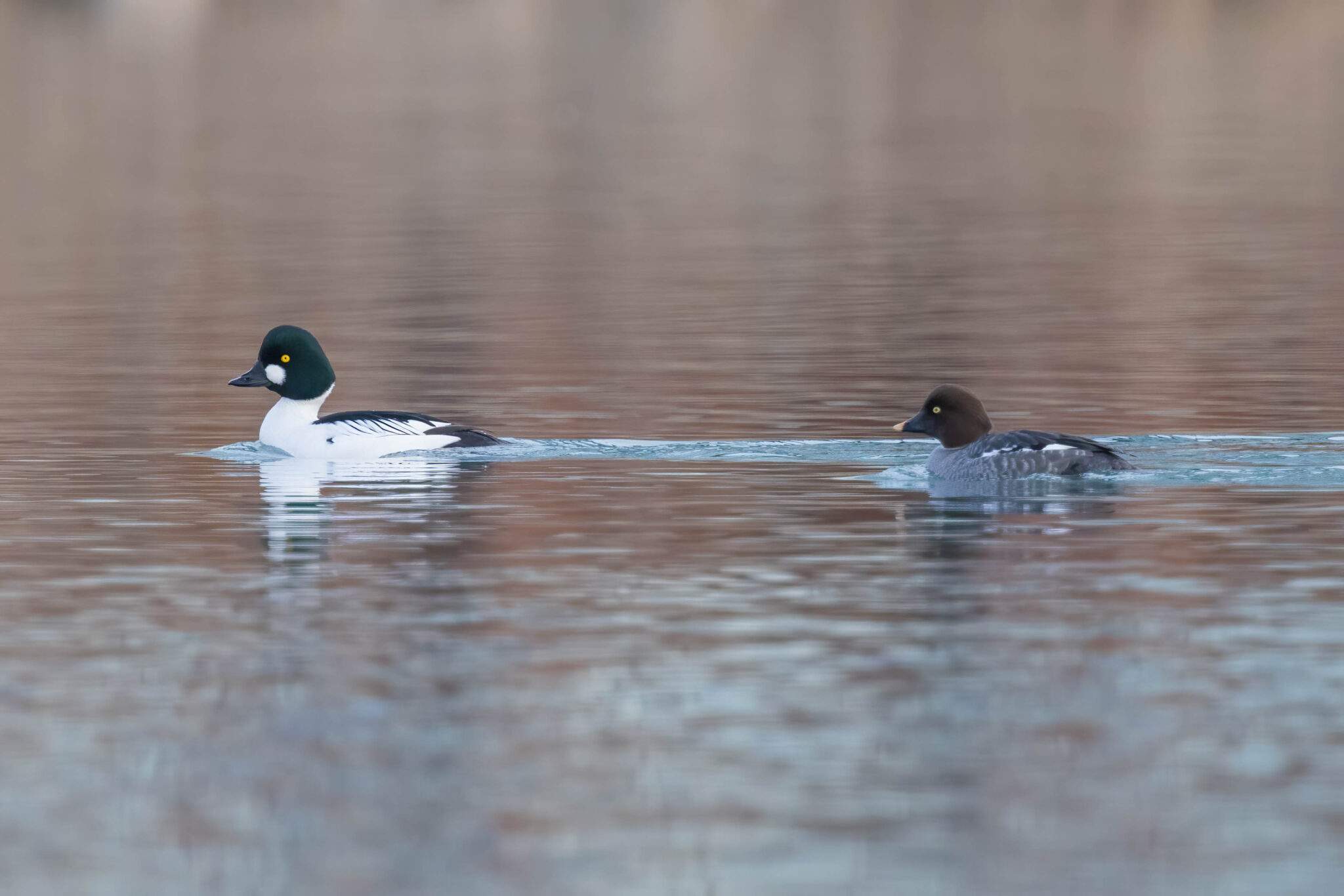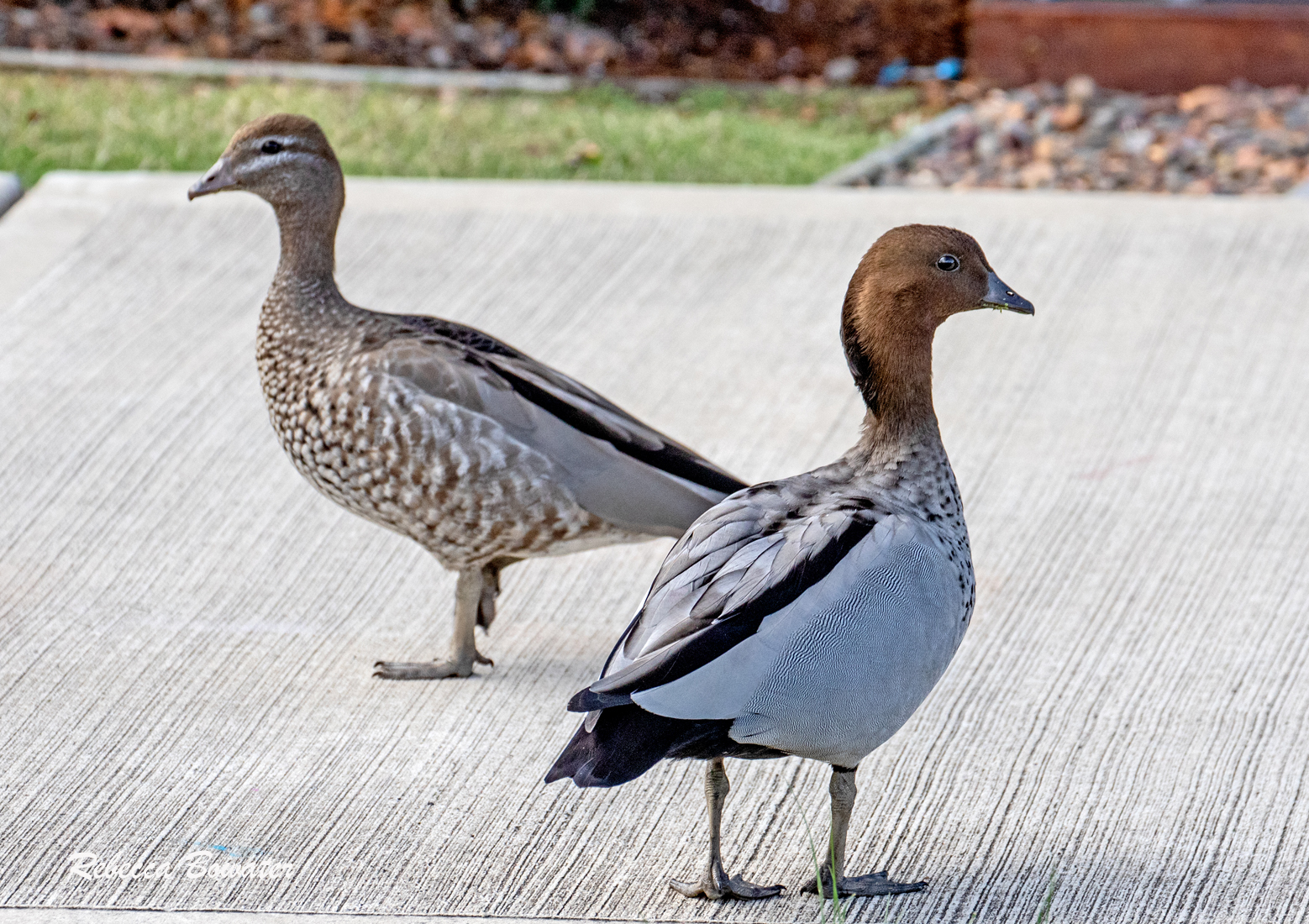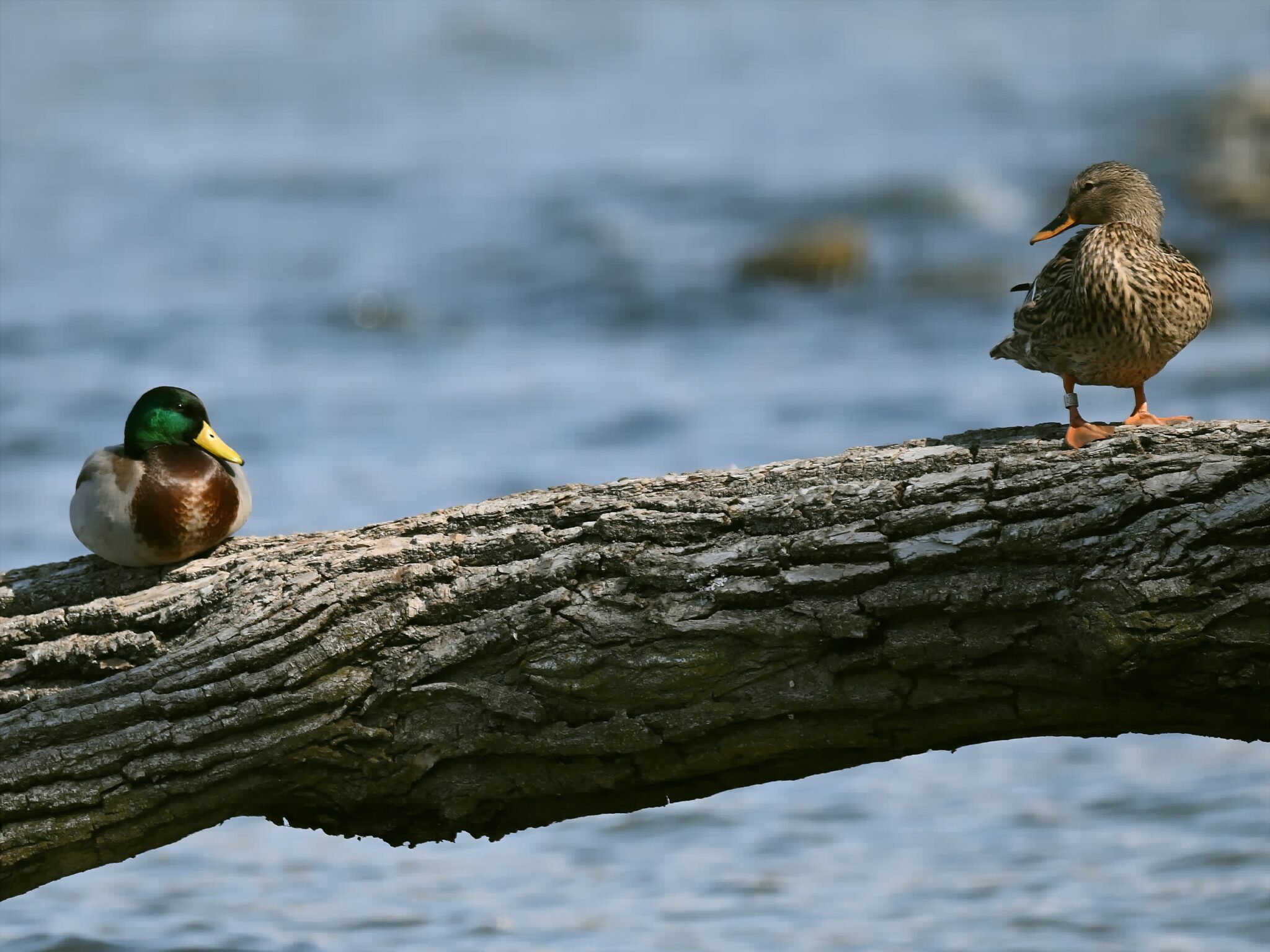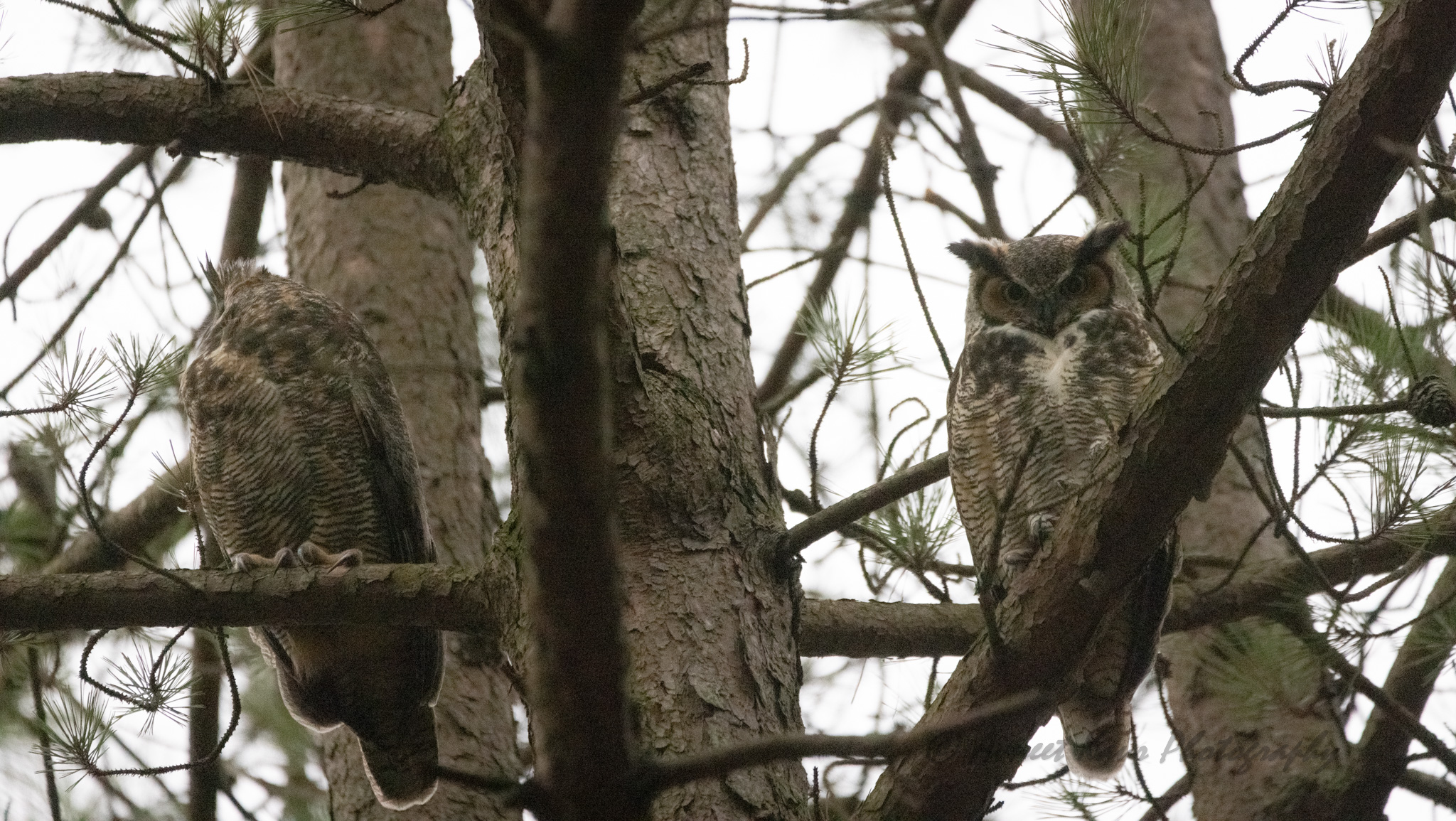The latest bird photography contest on GreatBirdPics ends soon (3/15/24). Win $100 for the best BIF shot. CLICK HERE for more details.
Bird species in which the male and female look the same, like the Blue Jay, Canada Goose, and Black-capped Chickadee, are called monomorphic. It’s very difficult to look at a picture with several Blue Jays in it and tell which are the males and which are the females. It is much easier to distinguish males and females in species that have plumage dimorphism, such as Mallards, Cowbirds, and Red-winged Blackbirds.
It’s not often that we are able to capture both a male and female of the same species in the same shot, but we’ve had a couple shared recently and I wanted to highlight them for you.
Mikeaff captured a pair of Common Goldeneyes (dimorphic) in a pond on the Northwestern University campus (very near Lake Michigan). The male is on the left.
Here is a picture of a Maned Duck in New Zealand. She says that locally it is known as a Wood Duck. Both the male and female are quite stunning.
Of course Mallards are a common dimorphic bird species. Good opportunities to get shots of them on the water can be found, but rarely when both are perched on a log (male on the left). Good eye on picking this up, JamesD!
Perhaps more of an assumption than a positive ID, Kaur shared this picture of a male and female Great Horned Owl on either side of a tree trunk. Great Horned Owls are monomorphic (the females tend to be a bit bigger than the males, but otherwise identical). Since these beautiful birds pair up during nesting season, it’s safe to say one is a male and the other is the female, but I don’t know which is which from the picture.
If you enjoy seeing beautiful pictures of birds from around the world and reading about them Click Here to sign up for our mailing list. Members can post their own GreatBirdPics and learn more about bird photography techniques.



